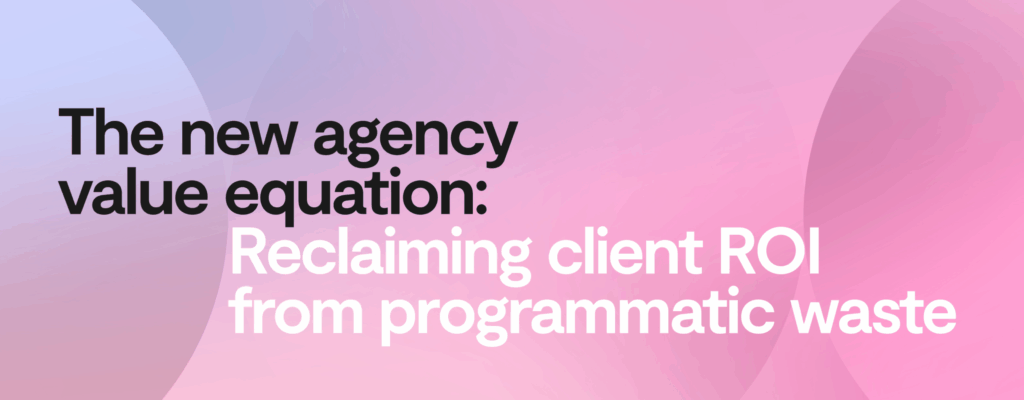- Blog
- Advertisers
Let’s celebrate the decline of the third-party cookie
First published on DCN InContext. The “death” of the third-party cookie is a popular narrative shaping the advertising industry today. But while the usual story is one of doom and gloom for publishers the reality is altogether more positive. This is a headline we should celebrate. Consider this: For more than a decade, third-party providers have aggregated publisher data, packaged it and sold it to advertisers. This revenue should – and will – be reclaimed by publishers in the months to come. Today, third-party cookies are at the heart of the digital advertising economy, which is built on data. Programmatic…

First published on DCN InContext.
The “death” of the third-party cookie is a popular narrative shaping the advertising industry today. But while the usual story is one of doom and gloom for publishers the reality is altogether more positive. This is a headline we should celebrate.
Consider this: For more than a decade, third-party providers have aggregated publisher data, packaged it and sold it to advertisers. This revenue should – and will – be reclaimed by publishers in the months to come.
Today, third-party cookies are at the heart of the digital advertising economy, which is built on data. Programmatic has enabled advertising to be transacted based on rich granular user data and is now used to fuel 85% of all digital advertising.
The promise for advertisers is that they can hyper-target their perfect audience. It’s little wonder the third-party data market is now worth $19bn in the US alone.
A privacy-first world
However, it’s an unsustainable model, and one that is already breaking. Browsers and regulators are enforcing privacy restrictions that will change the very foundations of the internet. Tomorrow’s web is moving to a privacy-first model, where third-party cookies are no longer available for advertising. There are also legal implications for businesses that do not comply with consumer data rights.
Take both Firefox and Safari, which this year has made significant changes to their browsers including the routine blocking of third-party cookies. To media buyers, these users are invisible. They cannot be served targeted advertising. With the two browsers controlling up to 40% of overall traffic to publisher sites, it’s easy to see why the doomsday headlines are coming in thick and fast.
Yet there is another way. One in which publishers which change their business models can survive and even thrive in a world without third-party cookies.
Be prepared
Currently, publishers are in two camps. They’re either ignoring the coming cookie-apocalypse, hoping that industry ID solutions will be their salvation – or they’re being proactive, rebuilding their businesses around first-party data instead. Let’s take a look at what it takes to be proactive.
Instead of putting their destiny in yet another external company’s hands, every publisher should see this new world as an opportunity, in which they are the primary, and indeed only, online advertising data supplier. Let’s call it the data 2.0 opportunity.
Unlike third parties, publishers have the technical and legal right to process user data. That’s because they have a direct relationship with consumers. This opens the door to a huge $19bn opportunity for publishers, in the US alone. As third-party data disappears, advertisers will look to publishers to access targeted audiences. Below is some advice for publishers to succeed and take advantage.
Own your own data
The relationship that a publisher has with its audience via subscriptions and behavioral data is becoming much more valuable. But publishers must shift their mindset and stop needlessly giving away their data. They must protect their advertising revenue by building a first-party data strategy to reduce their reliance on third-party cookies.
Understand your users
Third-parties have spent over ten years building and telling audience “stories”. Want to find a sports enthusiast? They could once build you an entire back story about these users, and allow you to target them all over the web. Not anymore, thanks to Safari and Firefox. By using third-party data today, advertisers have no differentiation between a CNN.com, and a NYTimes.com sports enthusiastic and have significant challenges with scale. Luckily, publishers are in a great position to start building their own audience “stories” with rich first party data, not relying on third-party data to do this work for them.
The best place for an advertiser to find and understand a sports enthusiast is directly from a relevant publisher.
Educate your sales teams
Adapting to a first-party data strategy requires expertise in an area that some publishers may be neglecting. It requires marketing their strengths and repositioning their offering to media buyers. They will need new skills that mirror what adtech companies have been doing so well over the last ten years. If you prepare your sales force to sell with accurate first-party data, you will eliminate any gaps between audience creation and how this data is sold in the market.
Privacy-first = on-device
Chrome, Apple, Brave, and many other tech companies have recently discussed moving data-processing to the device, using ‘edge computing’. They suggest that in order to better protect user privacy, the amount of data leaving a device should be limited. As soon as any user data leaves the device (and is sent to the cloud), a user’s privacy is at risk of breach by a third-party.
It is critical to keep data on-device in the data 2.0 world because your method of processing data is scrutinized.
First-party audiences
There has been a lot of press recently about the rise of context. Instead of relying on profiling individual users, Advertisers are increasingly looking to leverage the context around what a user is reading and their behavior on-site as a replacement of third-party data.
As third-party cookies decline publishers hold the richest data sets on the web. We support initiatives like IAB Data Labels which begins to explore a common taxonomy around audiences, and not cookies. An advertiser can find their audience in a unified way.
There is a better way
A recent study showed that publishers stand to lose around 52% of their revenue if Chrome also restricts third-party cookies. This should be a wake-up call to publishers to act now.
The proposed solution is not theoretical. This year we have seen publishers monetize their Safari traffic that lacks third-party cookies. Publisher Immediate Media has seen a 135% increase in revenue year-on-year, Stylist has doubled its advertising yield and Entrepreneur has recorded a 7.6x increase in targetable inventory which resulted in a dramatic boost in their revenue.
Each is in control of their own destiny, unlocking audiences through their first-party data and monetizing it effectively – even when third-party cookies are unavailable. They are ready for the demise of the cookie. Are you?
You may be interested in
From scale to accountability: The new agency value equation
Learn MoreThe curation revolution: Rebuilding trust and transparency in programmatic
Learn MoreKeep going, there's more to uncover.
From scale to accountability: The new agency value equation
Discover how leading agencies are rebuilding efficiency and accountability in programmatic media. Learn the 3-step blueprint to reclaim ROI, reduce waste, and deliver verifiable performance through data-enriched PMPs.
The curation revolution: Rebuilding trust and transparency in programmatic
Discover how leading agencies are rebuilding efficiency and accountability in programmatic media. Learn the 3-step blueprint to reclaim ROI, reduce waste, and deliver verifiable performance through data-enriched PMPs.
The performance paradox: Why programmatic efficiency is broken
Discover how leading agencies are rebuilding efficiency and accountability in programmatic media. Learn the 3-step blueprint to reclaim ROI, reduce waste, and deliver verifiable performance through data-enriched PMPs.
The new agency value equation: Reclaiming client ROI from programmatic waste
Discover how leading agencies are rebuilding efficiency and accountability in programmatic media. Learn the 3-step blueprint to reclaim ROI, reduce waste, and deliver verifiable performance through data-enriched PMPs.
Curation as a revenue diversification strategy: Lessons from The Arena Group
The Arena Group is finding new ways to take control of its data and revenue. Discover their powerful new approach centered on curation.
How Acxiom and Fundamental Group are solving for the Outcomes Era
Acxiom’s Ruowen Liscio and Fundamental Group’s Angus Maclaine discuss solutions for the Outcomes Era in advertising. Discover how predictive targeting, curation, and AI are delivering results in a privacy-first world.





